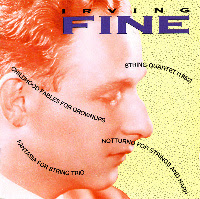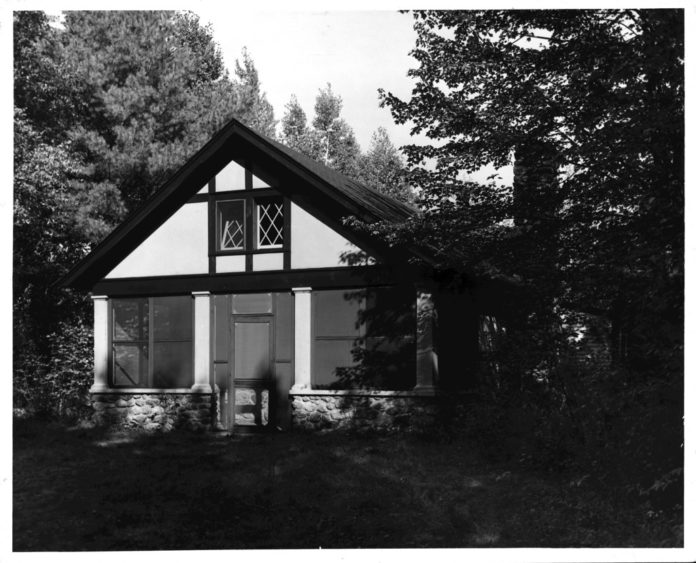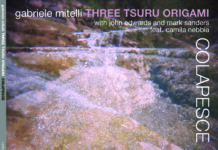Mid-20thcentury art music in America was largely dominated by twelve-tone composition. Other types of music were being composed, neoclassicism among them, but in the postwar years it was serial and other forms of composition with twelve tones that had acquired the reputation of epitomizing serious music. Some composers managed to bridge the gap—often wide and polemically charged—by combining elements of twelve-tone composition with elements drawn from neoclassicism or other styles. Irving Fine, a composer whose short career flourished in the 1940s and 1950s, was one such composer.
Fine (1914-1962) was a central member of an informal group of American composers centered on Boston during the early postwar years. Other members of the group, as Fine listed them in a 1957 lecture to the Tanglewood Seminar in Contemporary Music, were Arthur Berger, Harold Shapero, Lukas Foss, Louise Talma and Leo Smit. The composers of the Boston School, as it was sometimes called, were writing in a neoclassical style deeply influenced by Stravinsky’s example—so much so that the group was also known as “The Stravinsky School” or “The Harvard Stravinskians.” Neoclassicism for these composers is something of a generational marker; the style, with its revival and reinterpretation of compositional and orchestrational forms largely codified in the 18thcentury, was at a high point of influence in the 1930s, when many of them, including Fine, were reaching musical maturity.
The roots of Fine’s neoclassicism go back to his training at Harvard, where he studied composition with the neoclassicist Walter Piston and orchestration with Edward Burlingame Hill. His honors thesis was written on “Stravinsky’s Contribution to Twentieth-Century Musical Style.” In 1939 he met the teacher Nadia Boulanger in Cambridge and went to Paris to study with her. The war forced him to return to America, where from 1939 to 1950 he taught music theory and history at Harvard. Having failed to secure tenure there, he moved on to recently-founded Brandeis, where he played a central role in the early development of the school’s music program. He taught composition and theory at Brandeis, staying there until his death at age 47 in 1962.
The Partita for Woodwind Quintet is exemplary of Fine’s neoclassical style. Composed in Tanglewood, Massachusetts during the summer of 1948, the Partitawas described in the composer’s program note as consisting of a set of “free variations” based on two melodic fragments. The title of the entire work as well as the names of the movements—Introduction and Theme, Variations, Interlude, Gigue, Coda–allude to Classical or Baroque forms, as does the music itself. For example, Fine characterized the first movement as containing “a classical theme to be varied in the classical manner,” while the Gigue takes modified sonata form. As with neoclassicism generally, the harmonies throughout are dissonant; Fine seems to describe this piece when, in the 1957 Tanglewood lecture he quotes Nicolas Slonimsky’s definition of neoclassical harmony as consisting in a “pan-diatonic extension of tonality.” The music is astringent at times but never loses its tonal orientation, even in the freer passages. This is largely because of its well-delineated melodies, which provide a running context for the piece’s vertical organization.
In the early 1950s Fine began to shift to twelve-tone composition, albeit of a style of his own. Although he may have been influenced by Stravinsky’s own turn to twelve-tone writing, Fine had actually begun to work with serial forms before Stravinsky did, possibly as a result of hearing Aaron Copland’s Piano Quartet. Fine’s twelve-tone writing differs from Stravinsky’s in that, in contrast to Stravinsky’s frequent use of registral leaps, set permutations and fragmentary surfaces, Fine favored well-defined melodic lines and the repetition of tones and intervals in order to suggest an underlying tonality, but without implying a specific key. Fine’s emphasis on tonality, clarity of line and robust rhythms show how neoclassical values enter into, and modify, the twelve-tone structures he now began to employ. The ensuing music shows Fine not so much rejecting one style for another, but rather extending the principles of both to meet somewhere in between.
Fine’s first fully twelve-tone work was the String Quartet of 1952. Although the quartet’s musical material was generated by a row, Fine used the row in a sometimes unsystematic manner and even described the piece, in his program note, as being “frankly tonal, C being the prevailing tonality.” Its twelve-tone tonality can be read as a kind of extension of the Stravinskians’ neoclassical harmonies which, as Fine described them in the 1957 Tanglewood lecture, could be “free and unusually dissonant.” Once again Fine’s predilection for clarity of line comes through, particularly in the way he separates the cello part from the upper voices. This can be heard in an excellent version performed by the Juilliard Quartet, which along with other important works by Fine, can be found on a reissued CRI recording (NWCR574).
 The Fantasia for String Trio (1957), another twelve-tone work (and also available on the CRI recording), is deeply informed by neoclassical principles which serve as a kind of substrate over which serial methods are laid. This is apparent in the trio’s structures as, for example, the first of the three movements is set out in a fugal style, while the second is a modified scherzo. The opening viola solo consists of a lyrical reading of the tone row, stating it fully and then breaking it into two asymmetrical parts before the violin enters with its inversion. Fine derived all of the trio’s musical material from this opening statement. Throughout the piece the lines are long and singing rather than fragmented and angular; the rhythms, consistent with the neoclassical preference for physicality, are robust. This is especially true of the second movement—marked “molto ritmico”—which is driven by a pulse made up of repeated sixteenth notes.
The Fantasia for String Trio (1957), another twelve-tone work (and also available on the CRI recording), is deeply informed by neoclassical principles which serve as a kind of substrate over which serial methods are laid. This is apparent in the trio’s structures as, for example, the first of the three movements is set out in a fugal style, while the second is a modified scherzo. The opening viola solo consists of a lyrical reading of the tone row, stating it fully and then breaking it into two asymmetrical parts before the violin enters with its inversion. Fine derived all of the trio’s musical material from this opening statement. Throughout the piece the lines are long and singing rather than fragmented and angular; the rhythms, consistent with the neoclassical preference for physicality, are robust. This is especially true of the second movement—marked “molto ritmico”—which is driven by a pulse made up of repeated sixteenth notes.As the quartet and trio demonstrate, for Fine, twelve-tone structures were a means to expressive ends and not ends in themselves. As he once put it while discussing his own methods, “the ear is the ultimate arbiter.”







